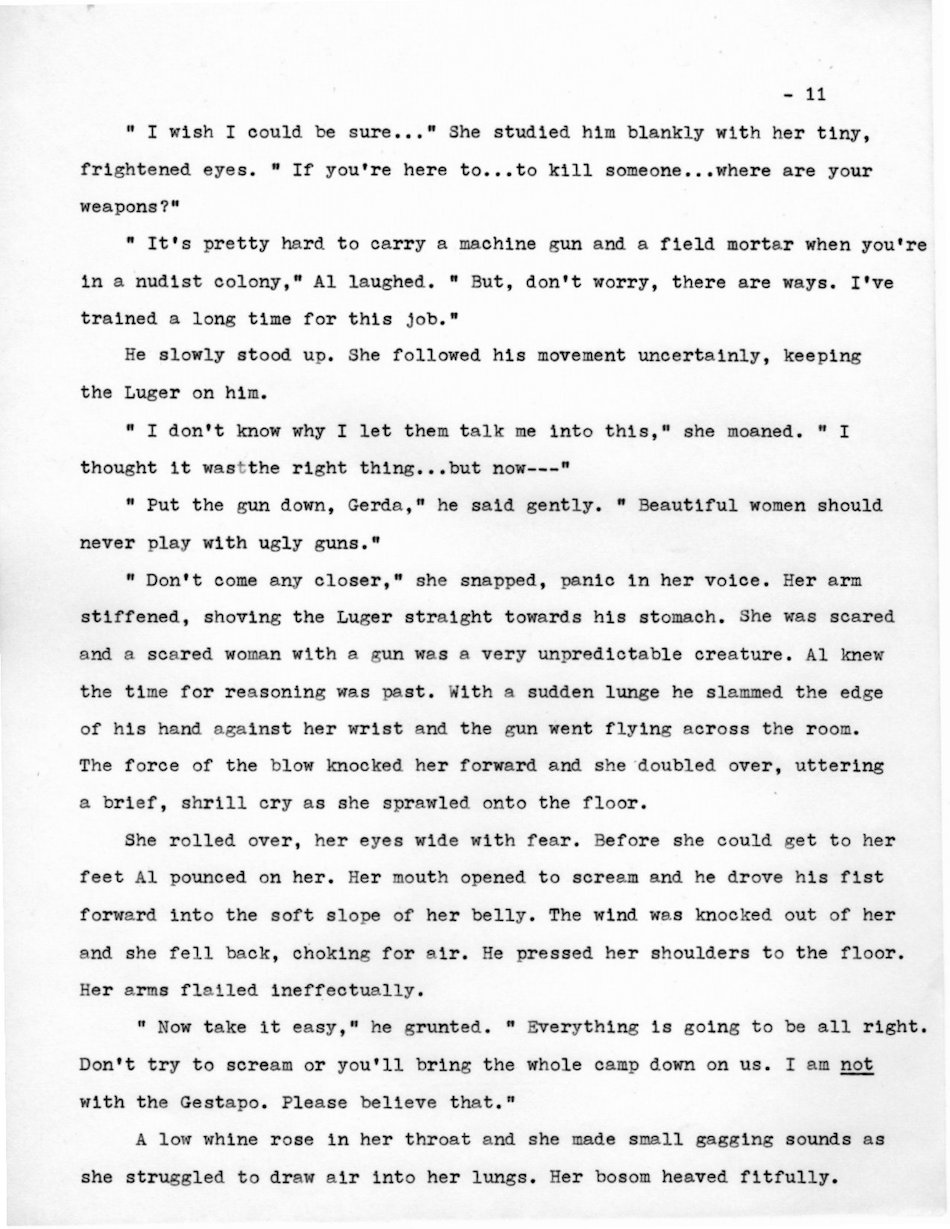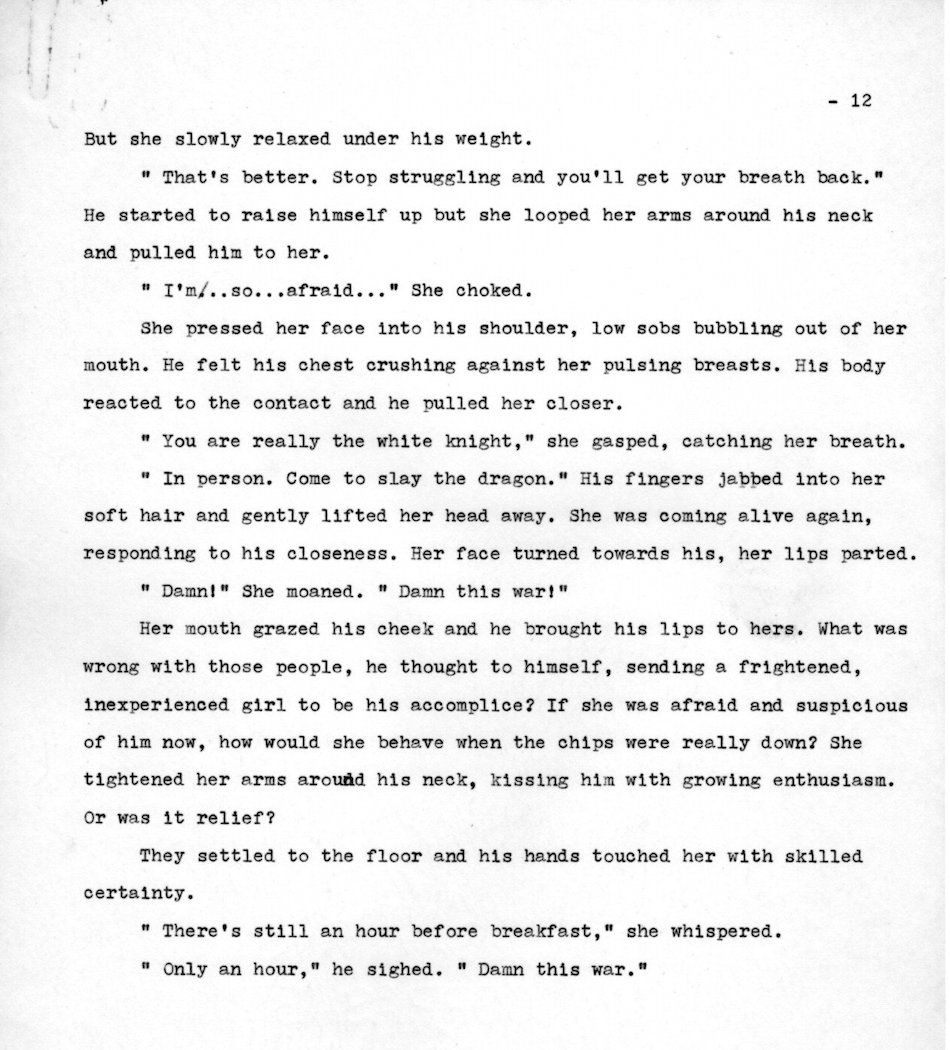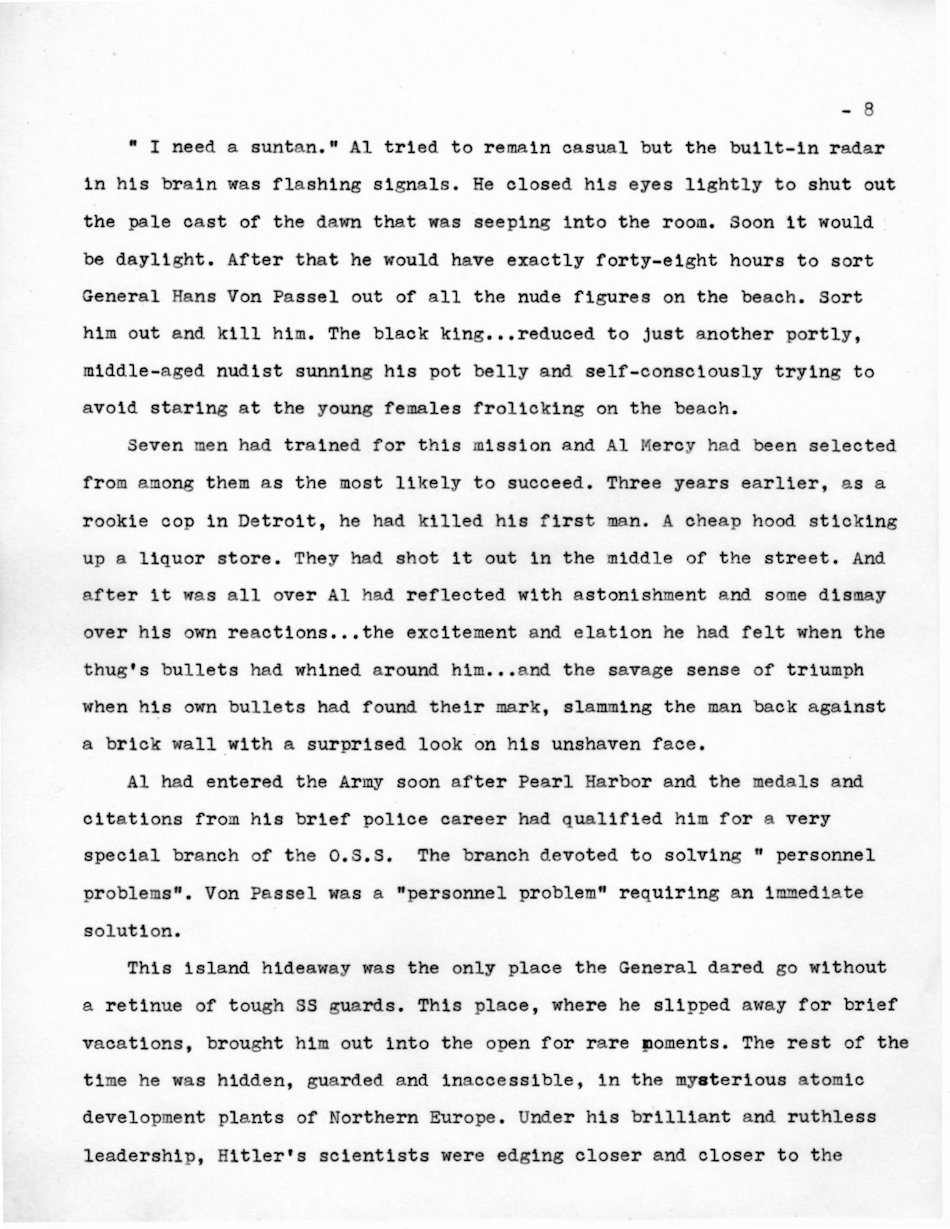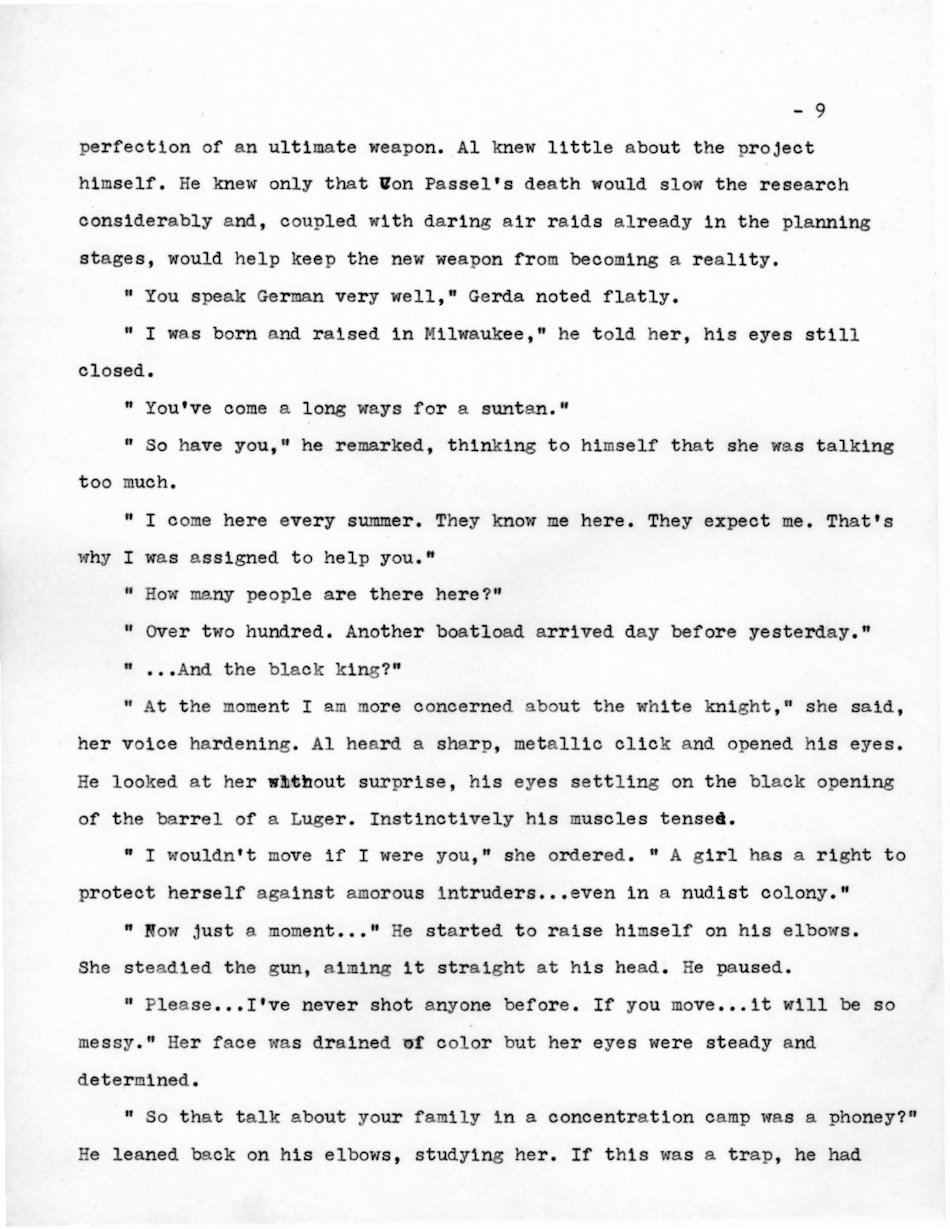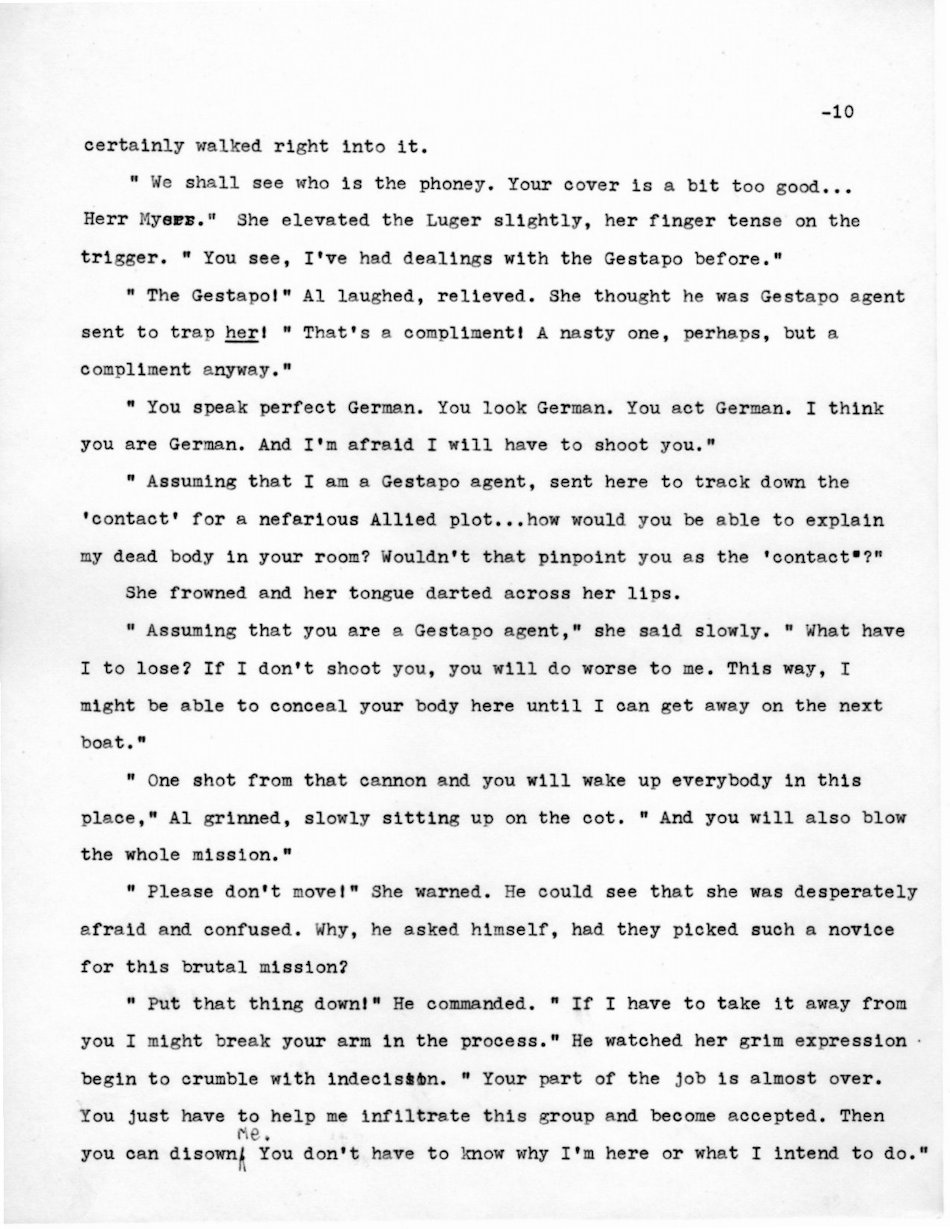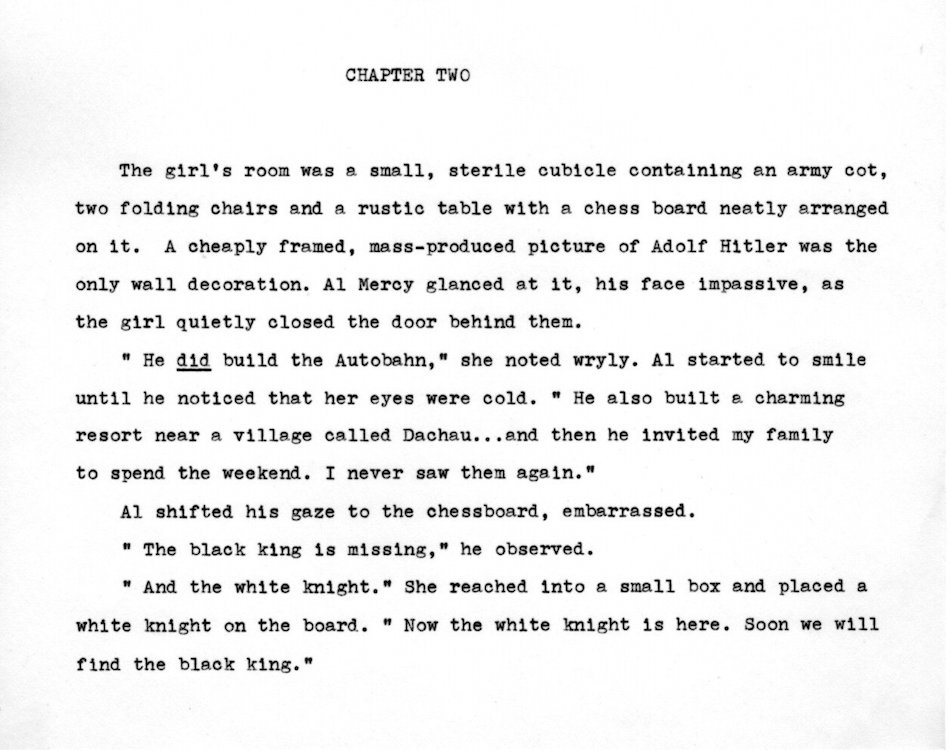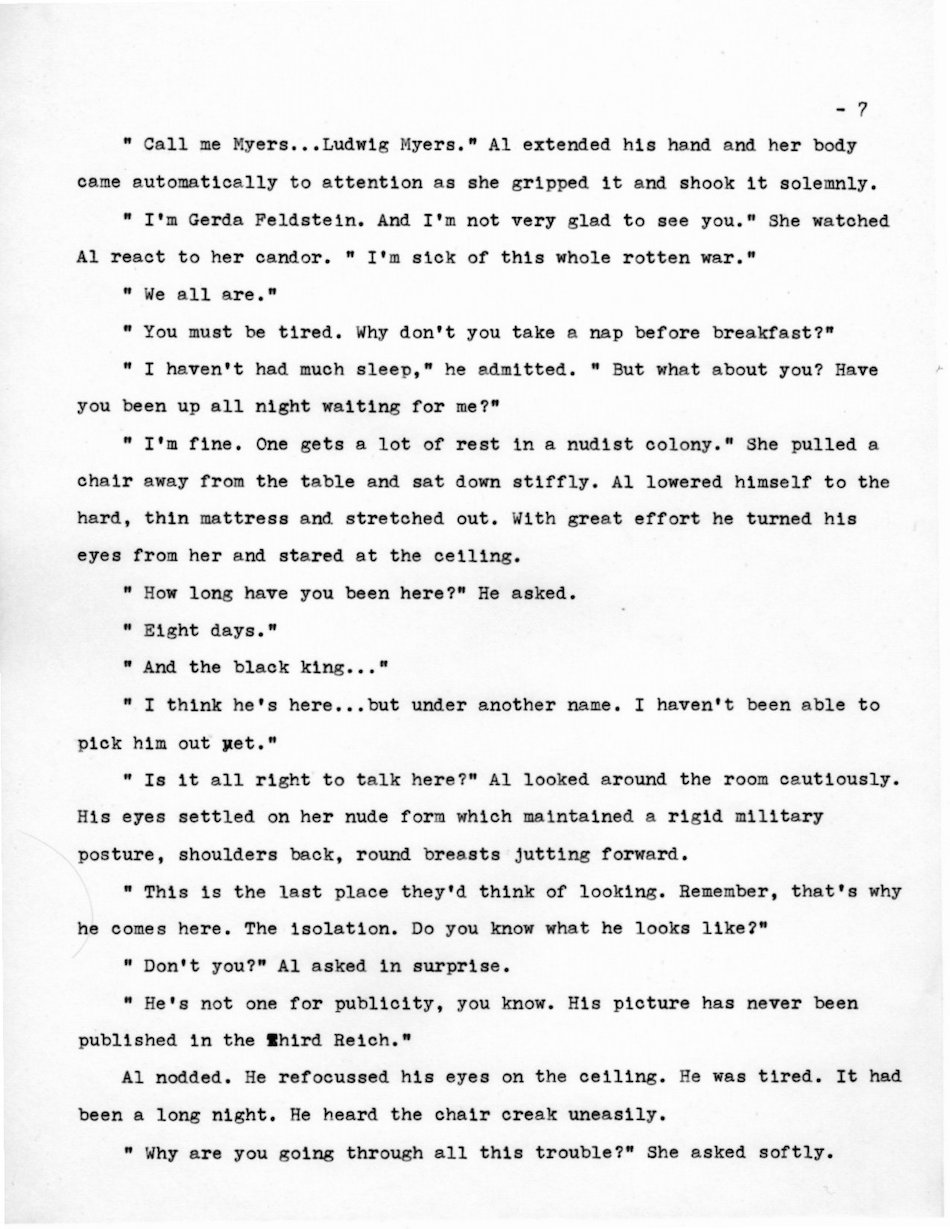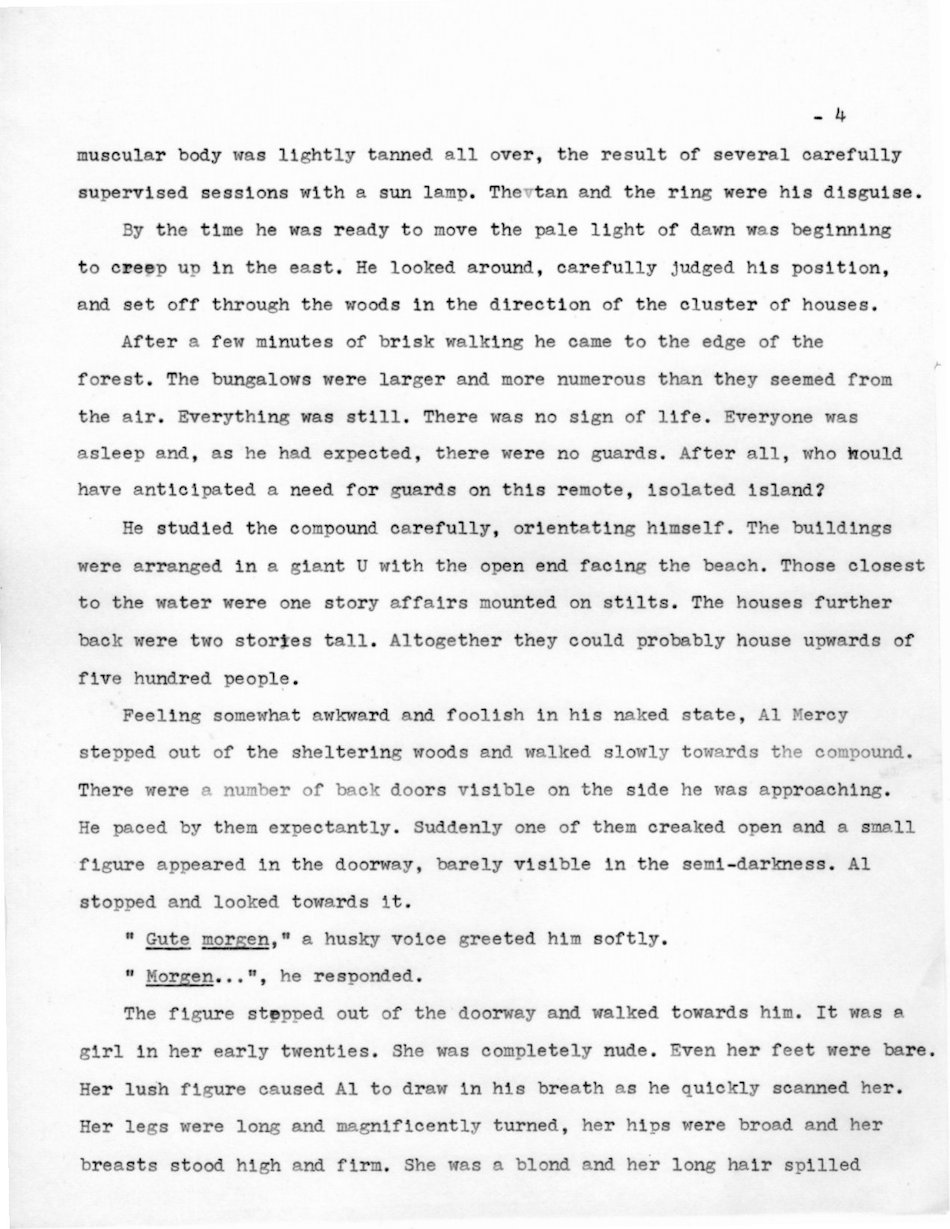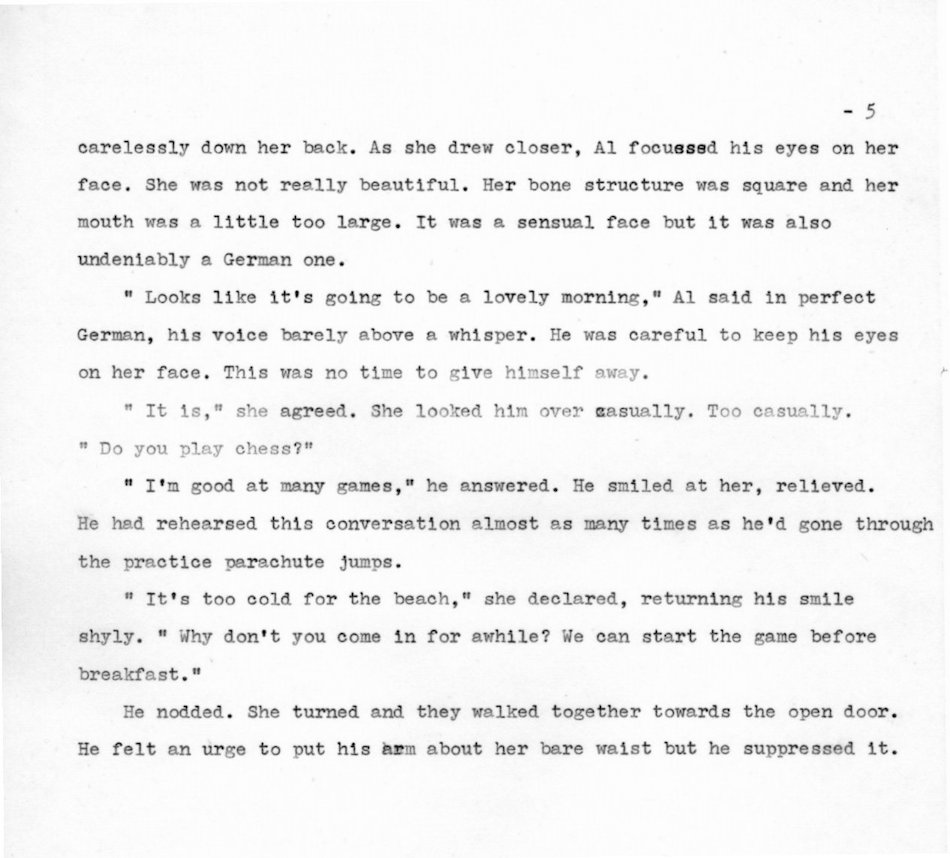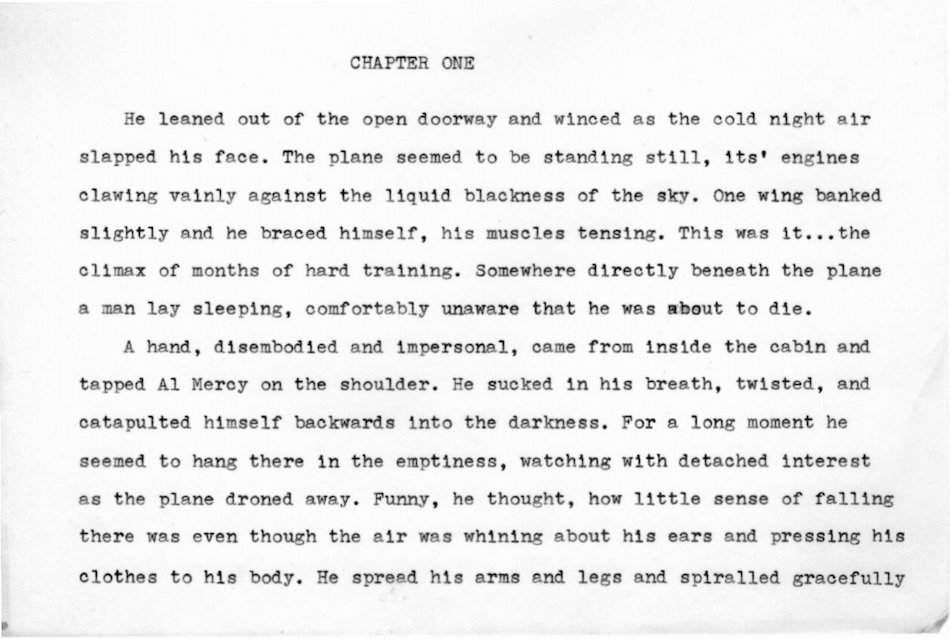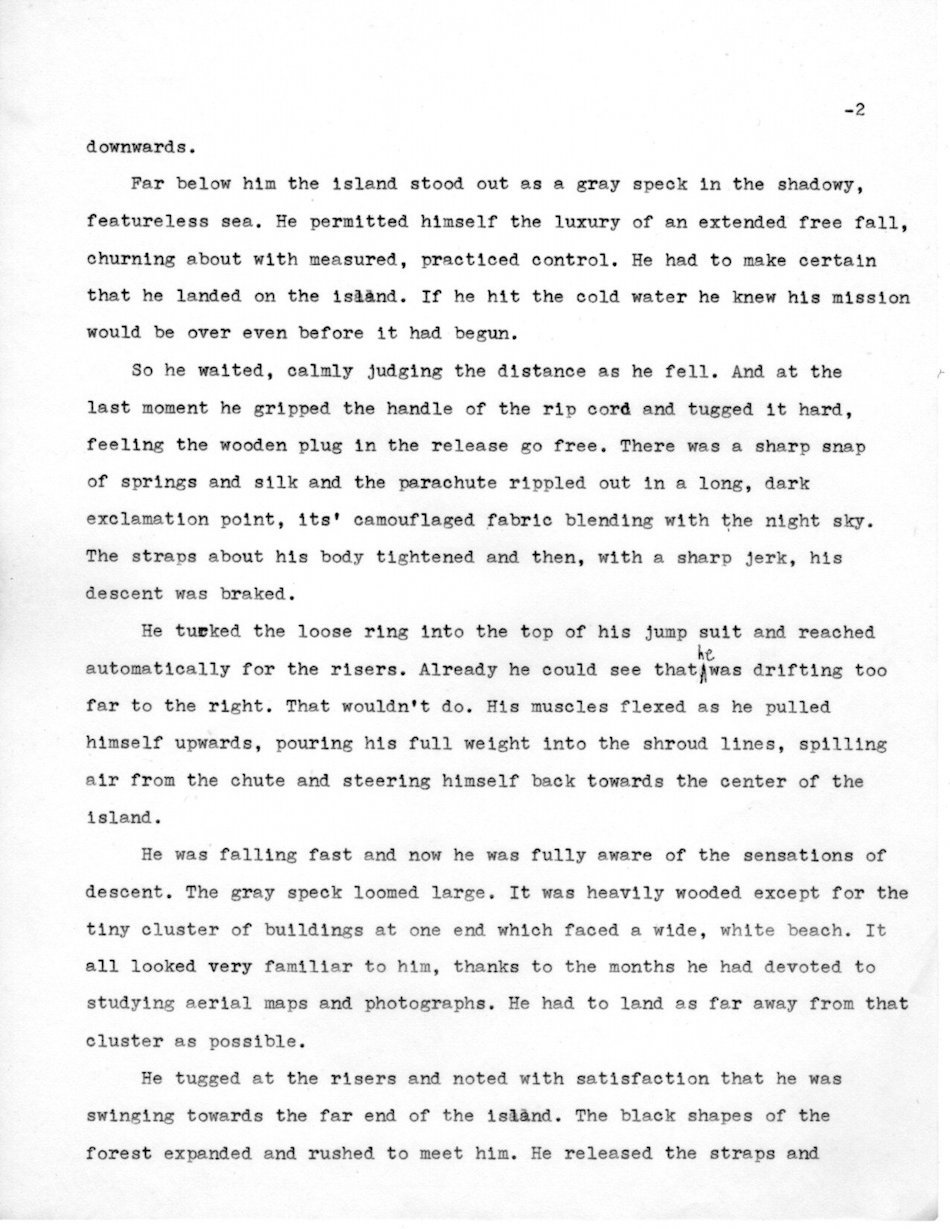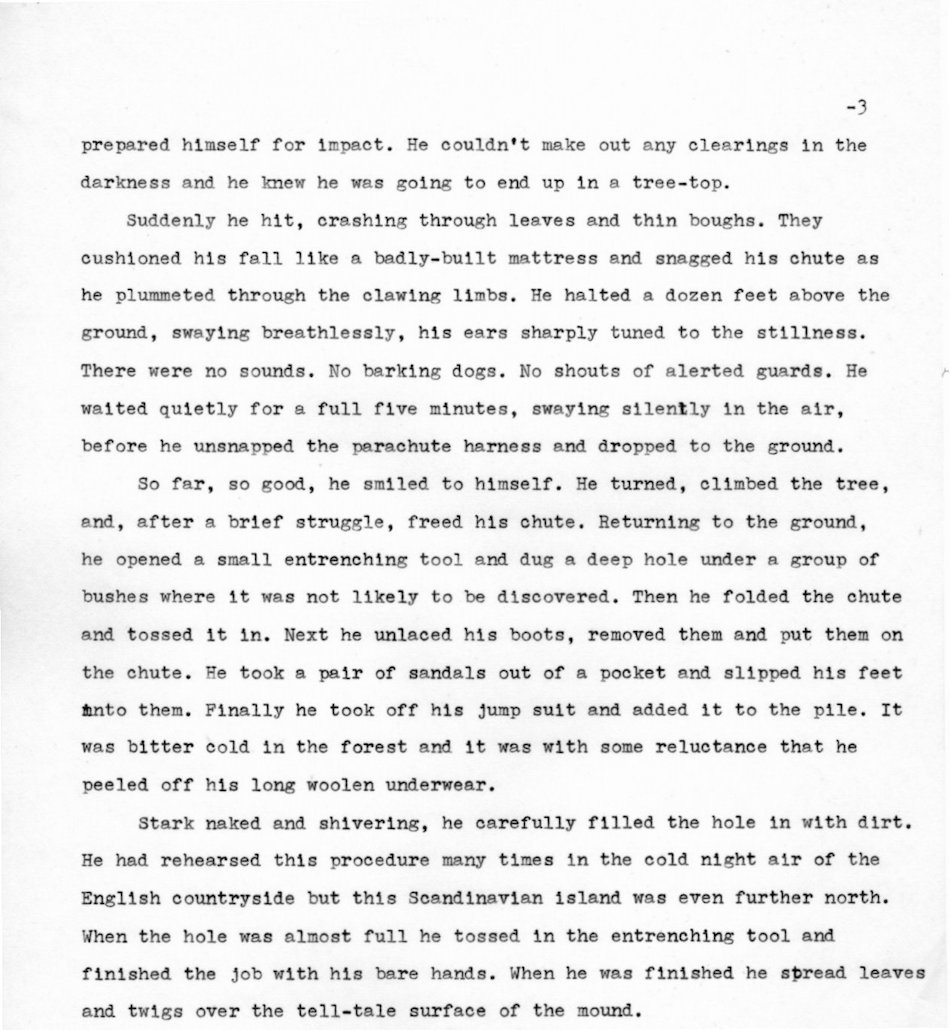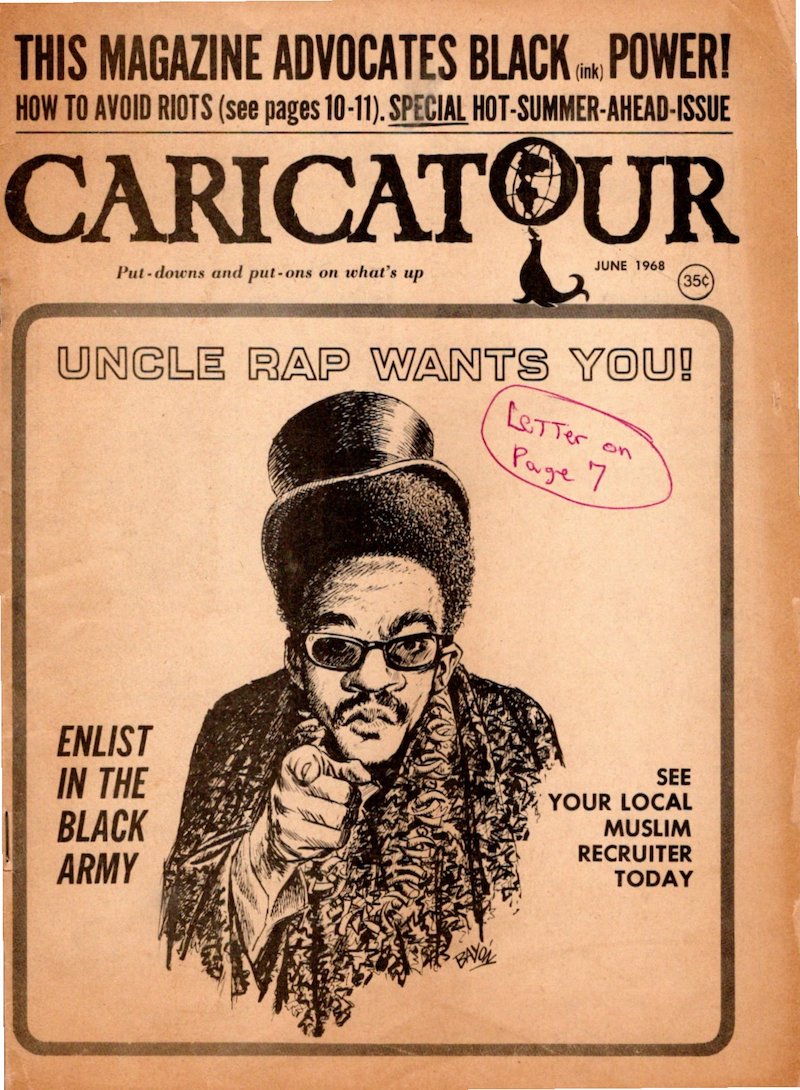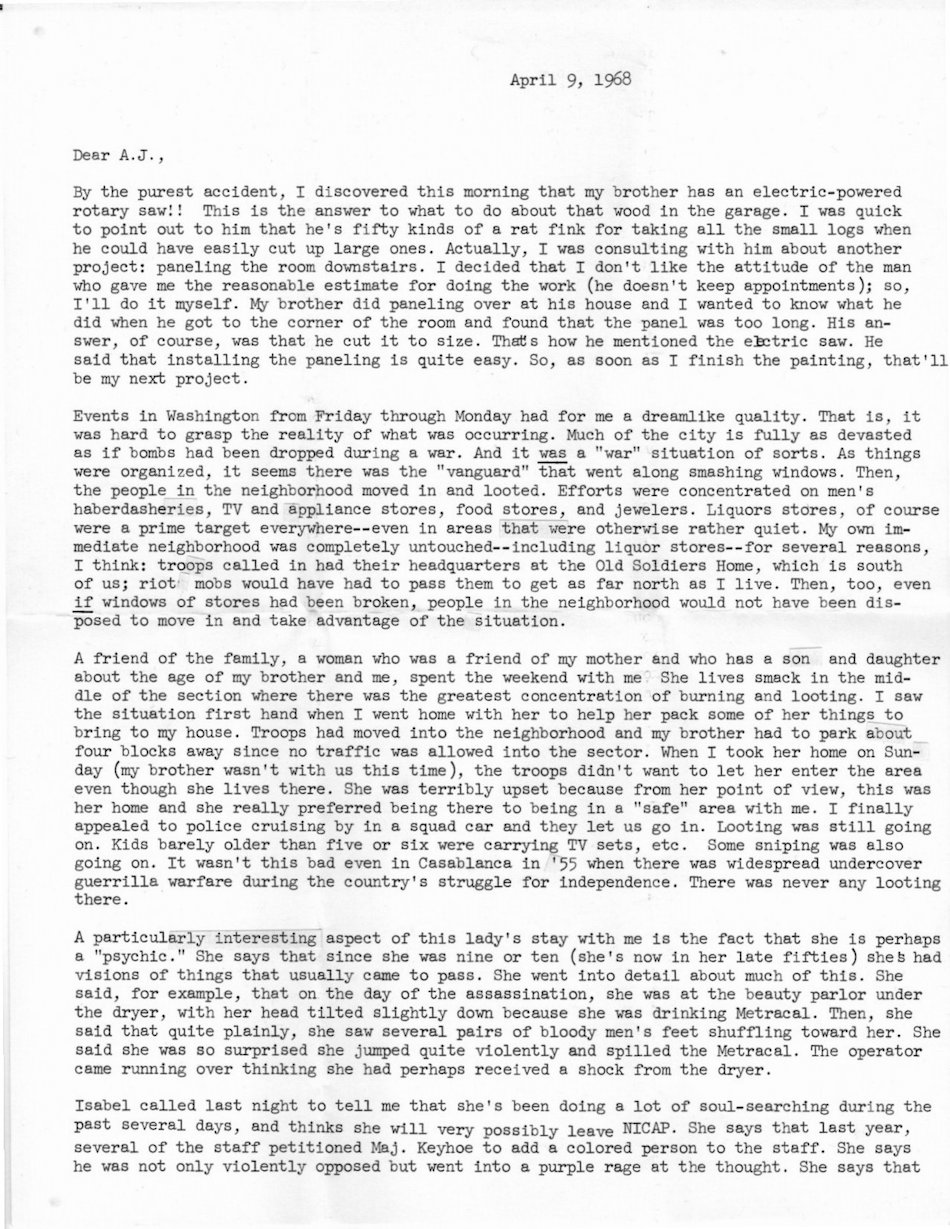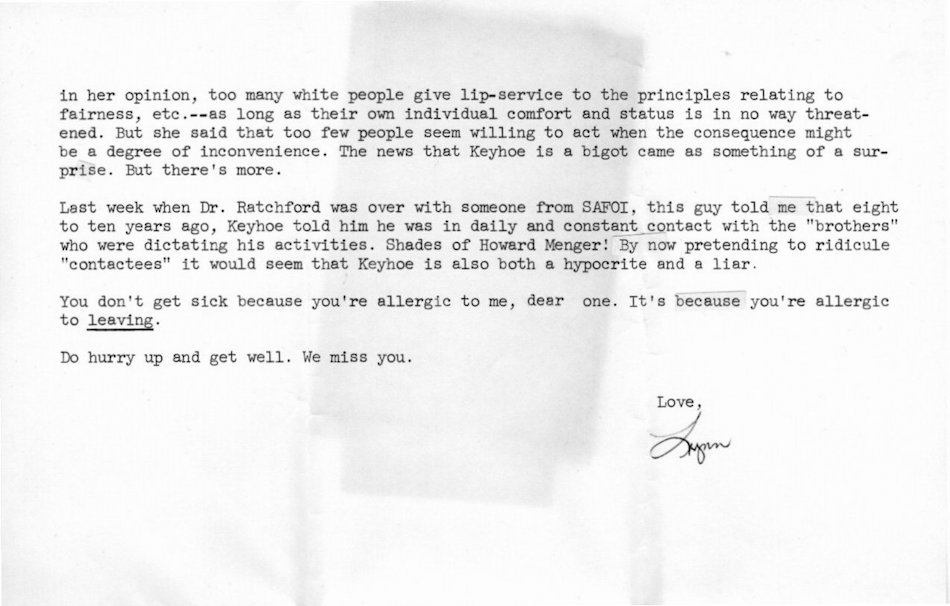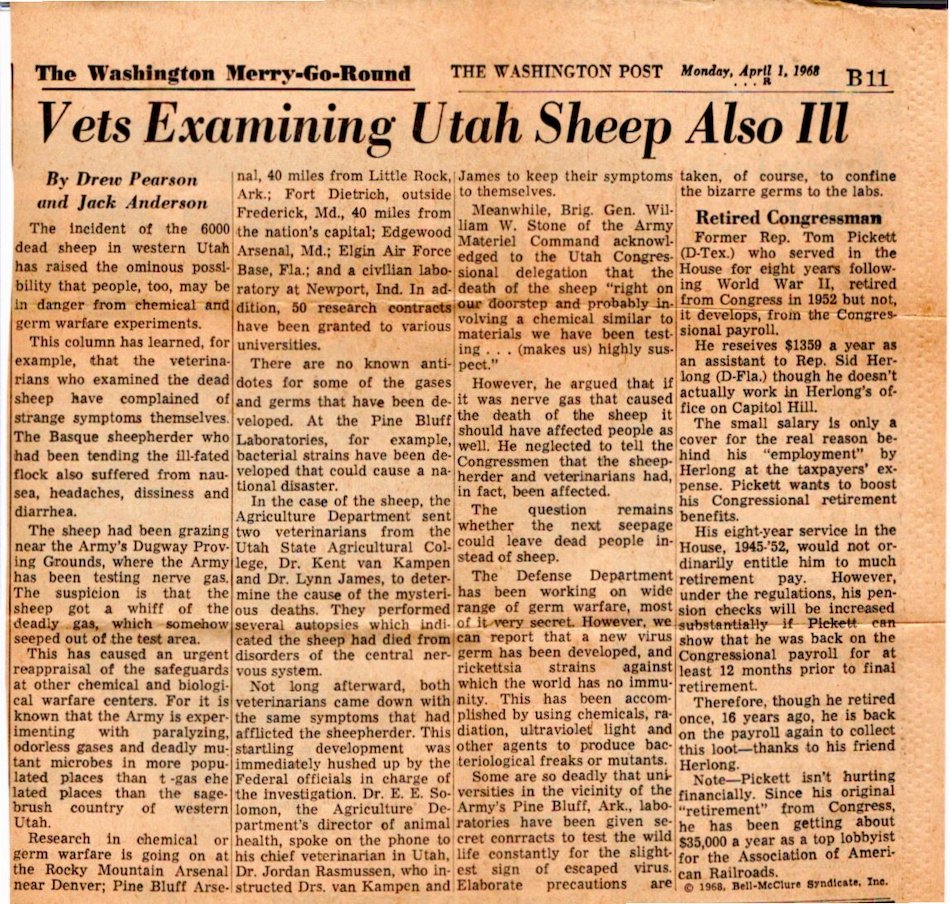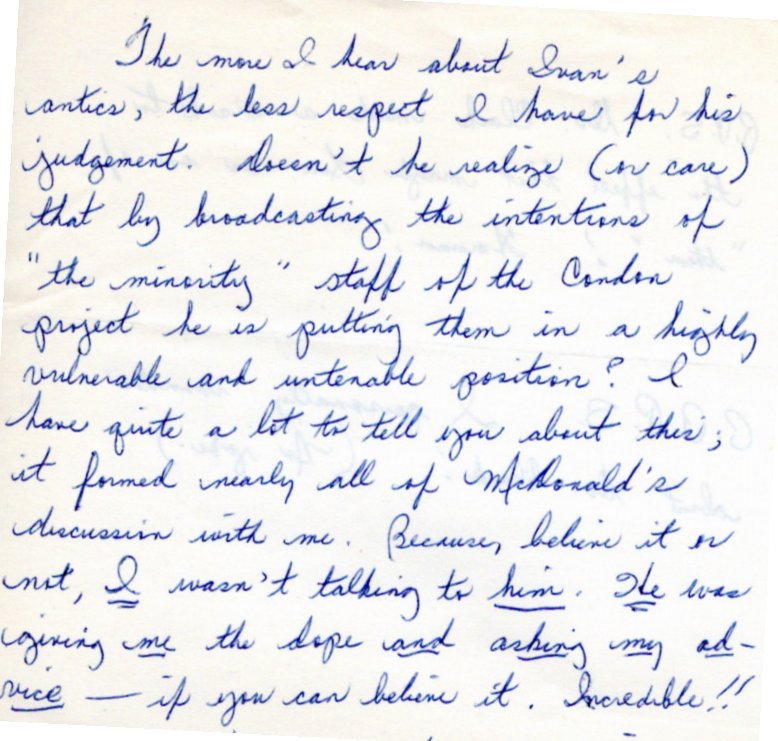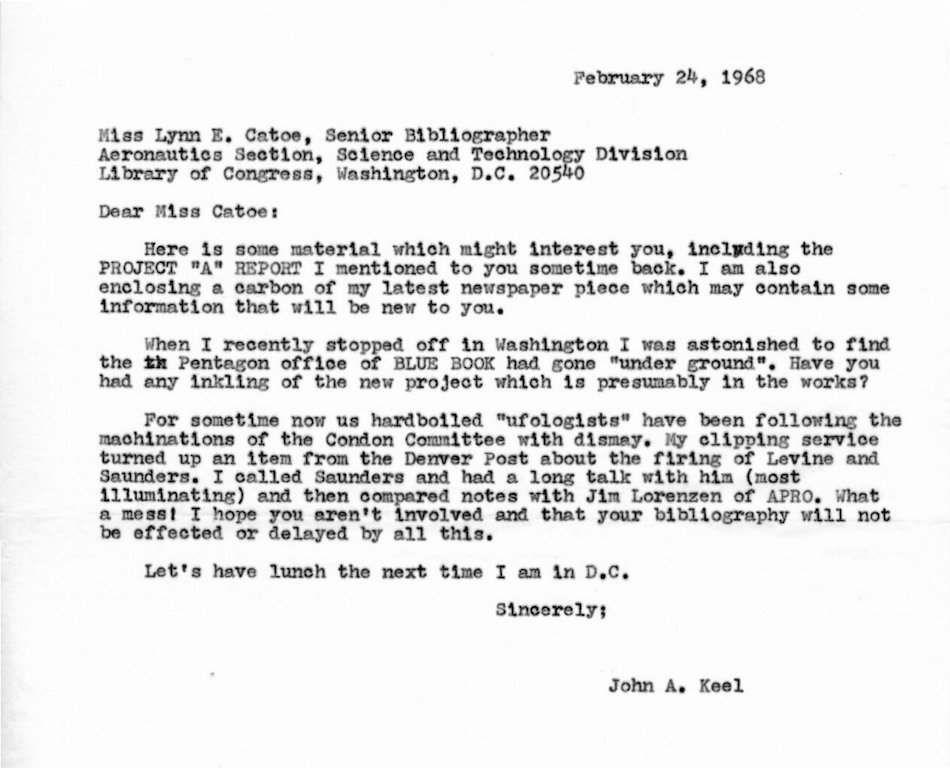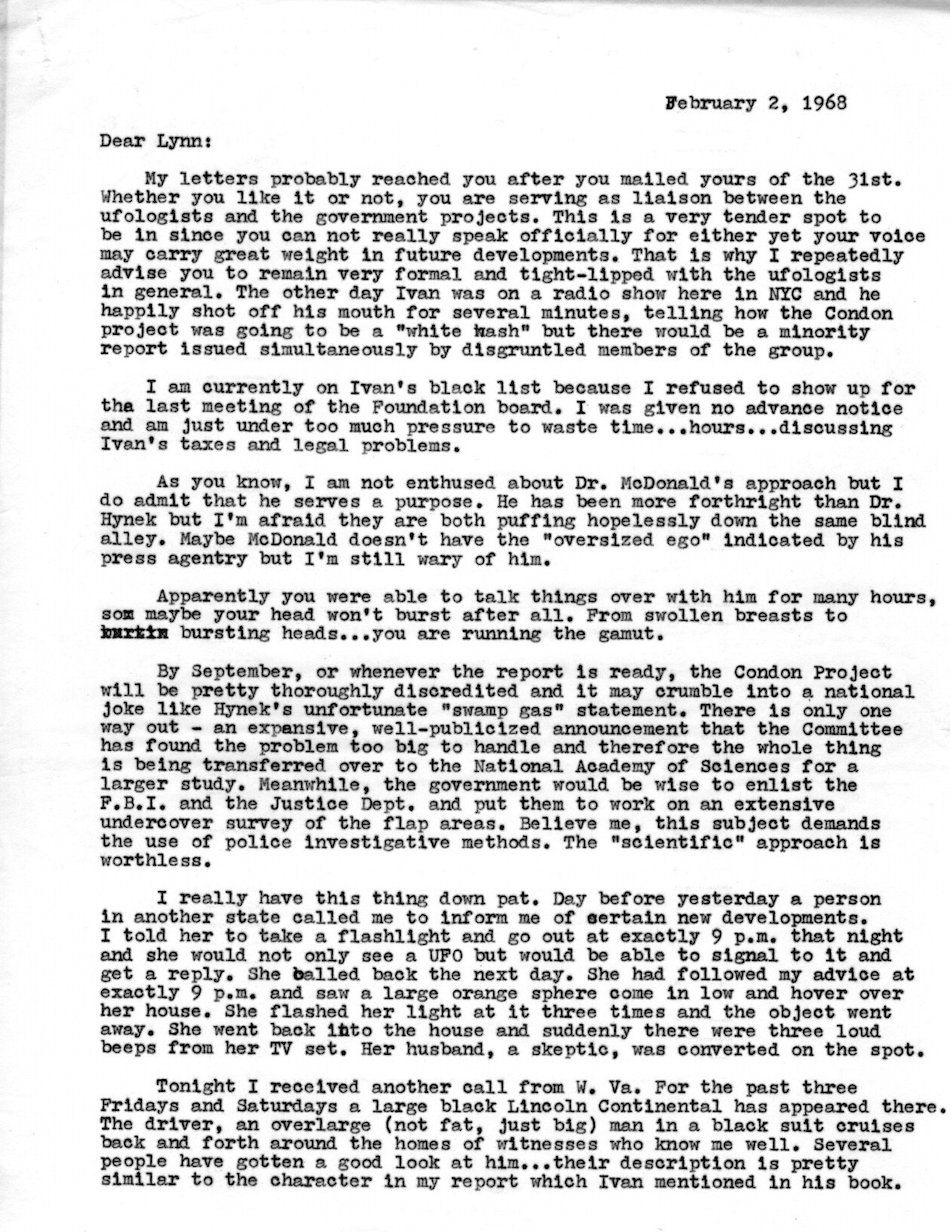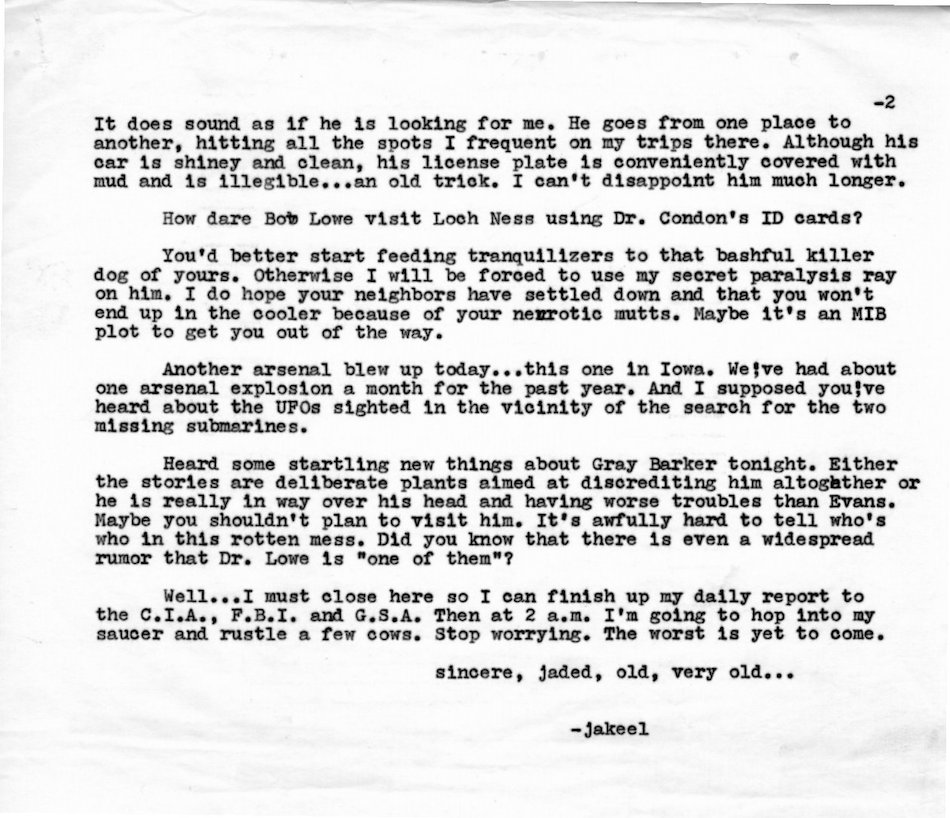Bormujos As the second (and last) chapter of John’s unfinished spy story concludes, secret agent Al Mercy and his contact, Gerda Feldstein, wrestle naked for her Luger, before settling for naked kissing. Damn this war!
October 20, 2020
October 12, 2020
Al Mercy (4)
As the second chapter of John’s unfinished spy story continues, the reader learns more about Al Mercy’s mission and background. Unfortunately, Gerda Feldstein has her suspicions, as well as a gun…
October 6, 2020
Al Mercy (3)
In the first chapter of John’s unfinished and untitled spy story, WW2 secret agent Al Mercy parachuted into a nudist colony on a Scandinavian island. As the second (and last) chapter begins, he discusses his mission with his contact, the beautiful and naked Gerda Feldstein. Assassination, mutual suspicion, and sexual tension lie ahead…
October 1, 2020
Al Mercy (2)
The exciting serial of Al Mercy continues! In the rest of the first chapter, Al Mercy, an American secret agent in World War 2, after having parachuted into a Scandinavian nudist colony, meets his contact.
For those of you just joining us, John wrote two chapters of an untitled spy story, which I’m posting here. I have no idea what he meant to do with it.
September 24, 2020
Al Mercy (1)
John apparently started this spy novel in the late ’60s, judging from the other papers in the folder. Maybe it was a first attempt at Love That Spy, maybe not. At any rate, he wrote two chapters, in which secret agent Al Mercy parachutes onto a nudist colony on a Scandinavian island in World War 2. There he joins forces with the beautiful Gerda Feldstein to find and kill General Hans Von Passel. It’s pretty silly, but you may welcome some diversion in these troubled times. John didn’t give it a title, so I’ll just call it after its dashing hero.
September 17, 2020
A Letter to “Caricatour”
Also in the spring and summer of 1968, a satirical monthly called Caricatour debuted and died. It was published by Art Pottier; Googling tells me he contributed to early issues of Cracked. Caricatour featured some fine cartoonists, including Jules Feiffer, Charles Rodrigues, Sid Harris, and Ed Harris, as well as pages of rather mild jokes about politics. It apparently lasted only three issues, from June to August. At any rate, John picked up the first issue, and wrote a jocular response, in the persona of an outraged conservative, which was published in the second issue.
And here’s the cover, featuring H. Rap Brown by the Argentine caricaturist Narciso Bayón.
September 10, 2020
A Letter from Lynn Catoe, April 9, 1968
This is the last letter I’ll post from John’s correspondence with Lynn Catoe. Their relationship was not easy, complicated by their differences: she went to the Sorbonne, he was a high school dropout; she grew up with servants, he came from a farm; she was black, he was white (all of these run through their letters). This last letter is not about their relationship, and mostly not about ufology. Ms. Catoe reports on the riots in Washington, D. C. following the assassination of Martin Luther King, on April 4. She also mentions some racial issues in NICAP, and a visit from J. Thomas Ratchford (of the Air Force Office of Scientific Research) and someone from the Secretary of the Air Force Office of Information; Ratchford tells her Keyhoe claimed contact with space brothers. Finally, she enclosed two clippings: one a report of an early appearance by Stanton Friedman, later an active ufologist; the other a column by Drew Pearson and Jack Anderson, about dead sheep and rumors of germ warfare and mutated viruses. Riots, racism, and viruses, all from 1968.
September 1, 2020
A Letter from Lynn Catoe, March 29, 1968
At this point, the Keel-Catoe correspondence becomes less frequent and more devoted to their relationship. I assume they were talking more on the phone or in person; John also may have written letters but not kept carbons. However, I’ll post a few excerpts from Ms. Catoe’s letters that concern John’s research and the murky world of ufology in 1968.
In this excerpt, Ms. Catoe is baffled about Gray Barker’s interest in whether she has a copy of the Varo edition. (The Varo edition, for readers new to it, was a copy of M. K. Jessup’s book The Case for the UFO, annotated by a certain Carl Allen, and published by a Texas company called Varo for the Office of Naval Research; it caused quite a stir at the time.) She also writes about her interest in the Kaspar Hauser case, recommends that John contact the British ufologist John Cleary Baker, and, most curiously, wants to know how to tell John from his rumored double.
August 25, 2020
A Letter to Lynn Catoe, February 24, 1968
In February 1968, John and Lynn Catoe started seeing each other more seriously, and their letters were mostly concerned with their relationship. Threaded throughout, however, are updates on the state of ufology. Also in February, the Condon Committee (a group at the University of Colorado, funded by the USAF to study UFOs) had a bit of a scandal. One of its members, Robert Low, wrote a memo to two administrators at the University, saying that the Committee would find that UFOs had no basis in reality. Two other members, Norman Levine and David Saunders, sent copies of the memo to NICAP and James McDonald, among others. On February 9, Condon fired Levine and Saunders over the incident.
In a letter to John on February 6, Lynn Catoe mentioned the brewing scandal, and said her recent long talk with McDonald had focused on it. She was also exasperated with Ivan Sanderson’s part in it.
In a formal letter to Ms. Catoe in her role as bibliographer, John catches her up to date.
August 18, 2020
A Letter to Lynn Catoe, February 2, 1968
John’s next letter to Lynn Catoe is certainly newsy. He mentions Ivan Sanderson (and John’s impatience with his rambling meetings), the Condon Report, a curious interaction with a UFO witness, a new report of a Man In Black in West Virginia, an exploding arsenal in Iowa, and unspecified “startling new things” about Gray Barker. He also responds to Ms. Catoe’s meeting with James McDonald and complaints about her dog. Bob Lowe and Dr. Condon were mentioned in a footnote in her last letter; Ivan Sanderson had confused the two.
